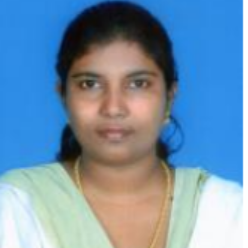International Journal of Modern Education and Computer Science (IJMECS)
IJMECS Vol. 8, No. 3, 8 Mar. 2016
Cover page and Table of Contents: PDF (size: 437KB)
Towards MORK: Model for Representing Knowledge
Full Text (PDF, 437KB), PP.45-53
Views: 0 Downloads: 0
Author(s)
Index Terms
Knowledge Representation, Knowledge Retrieval, Conceptual Graph, Description Logics, Predicate Logic
Abstract
Smart world needs intelligent system for effective and timely decision making. This is achieved only through a knowledge based system with functional knowledge representation units. In this paper, two models are proposed for representing knowledge. This process involves in getting the data and placing the information in the correct location. Logical notations are used for taking the clauses and graph is used for putting the entities. In Model one, the data is translated into logical statements using predicate logics, later the knowledge is stored in conceptual graph and retrieved. Whereas in Model two, the given information is translated using First Order Logic (FOL), by applying description logic concept rules are defined and as a result reasoning is done. Storage is done by using concept-relation graph. The main aims of our models are to have easy and simple access over the information. These models return the required exact answer, for the higher order query posted by the end user to the intelligent system.
Cite This Paper
S. Praveena Rachel Kamala, S. Justus, "Towards MORK: Model for Representing Knowledge", International Journal of Modern Education and Computer Science(IJMECS), Vol.8, No.3, pp.45-53, 2016. DOI:10.5815/ijmecs.2016.03.06
Reference
[1]Russell S and Norvig P, “Artificial Intelligence: A Modern Approach”, Prentice Hall, Third Edition, 2010.
[2]Yiyu Yao, YI Zeng, Ning Zhong and Xiangji Huang, “Knowledge Retrieval (KR)”, IEEE Computer Society, Silicon Valley, USA, 2007, pp 729 - 735.
[3]Stephan Grimm, Pascal Hitzler and Andreas Abecker, “Knowledge Representation and Ontologies: Logic, Ontologies and Semantic Web Languages”, Semantic Web Services, 2007, pp 37 – 87.
[4]Jianhui Luo, Haiying Tu, Krishna Pattipati, Liu Qiao and Shunsuke Chigusa, “Diagnosis Knowledge Representation and Inference: Understanding fundamental ideas behind graphical models”, IEEE Instrumentation and Measurement Magazine, 2006, pp 45 - 52.
[5]David Makinson, “Sets, Logic and Maths for Computing”, Springer, Undergraduate topics in Computer Science, 2008.
[6]Markus Krőtzseh, František Simančik and Ian Horrocks, “Representation and Reasoning: Description Logic”, IEEE Intelligent Systems 2014, pp 12 -19.
[7]Franz Baader, Ian Horrocks and Ulrike Sattler, “Description Logics”, Elsevier, Chapter 3, Handbook of Knowledge Representation, 2007, pp 135 - 180.
[8]Michel Chein and Marie – Laure Mugnier, “Graph – Based Knowledge Representation: Computational Foundations of Conceptual Graphs”, Advanced Information and Knowledge Processing, Springer, 2009.
[9]John F Sowa, “Knowledge Representation: Logical, Philosophical and Computational Foundations”, New York, PWS Publishing Co. , 2000.
[10]Grega Jakees, Veljko Milutinović, Sanida Omerović and Sašo Tomažič, “Concepts, Ontologies, and Knowledge Representation”, SpringerBriefs in Computer Science, Springer New York, 2013.
[11]Sebastian Rudolph, “Foundations of Description Logics”, Karlsruhe Institute of Technology, Germany, 2011.
[12]Van Harmelen, V Lifschitz, and B Porter, “Handbook of Knowledge Representation”, Elsevier, chapter 5, Conceptual graph by John F Sowa, 2008, pp 213 – 237.
[13]X. Li and F. Lara Rosano, “Adaptive fuzzy Petri nets for dynamic knowledge representation and inferences”, Elsevier, Expert Systems with applications, Volume 19, Issue 3, 2000, pp 235 - 241.
[14]Phayung Meesad and Gary G. Yen, “Combined Numerical and Linguistic Knowledge Representation and Its Application to Medical Diagnosis”, IEEE transactions on systems, man, and cybernetics—Part A: systems and humans, Vol. 33, No. 2, March 2003, pp 206 - 222.
[15]Hong-Sen Yan,” A New Complicated-Knowledge Representation Approach Based on Knowledge Meshes”, IEEE transactions on knowledge and data engineering, vol. 18, no. 1, January 2006, pp 47 - 62.
[16]Hu-Chen Liu et al., “Dynamic Adaptive Fuzzy Petri Nets for Knowledge Representation and Reasoning”, IEEE Transactions on Systems, Man, and Cybernetics: Systems, Vol. 43, No. 6, November 2013, pp 1399 - 1410.
[17]Hu-Chen Liu, Long Liu, Qing-Lian Lin, and Nan Liu, “Knowledge Acquisition and Representation Using Fuzzy Evidential Reasoning and Dynamic Adaptive Fuzzy Petri Nets”, IEEE Transactions On Cybernetics, Vol. 43, No. 3, June 2013, pp 1059 - 1072.
[18]Jose´ Manuel Go´mez-Pe´ rez, Michael Erdmann, Mark Greaves, and Oscar Corcho, “A Formalism and Method for Representing and Reasoning with Process Models Authored by Subject Matter Experts”, IEEE Transactions On Knowledge And Data Engineering, Vol. 25, No. 9, September 2013, pp 1933 - 1945.
[19]Milko Marinov et al., “Using frames for knowledge representation in a CORBA-based distributed environment”, Knowledge-Based Systems, Elsevier Science Publishers B. V. Amsterdam, The Netherlands , Volume 21 Issue 5, July, 2008, Pages 391-397.

